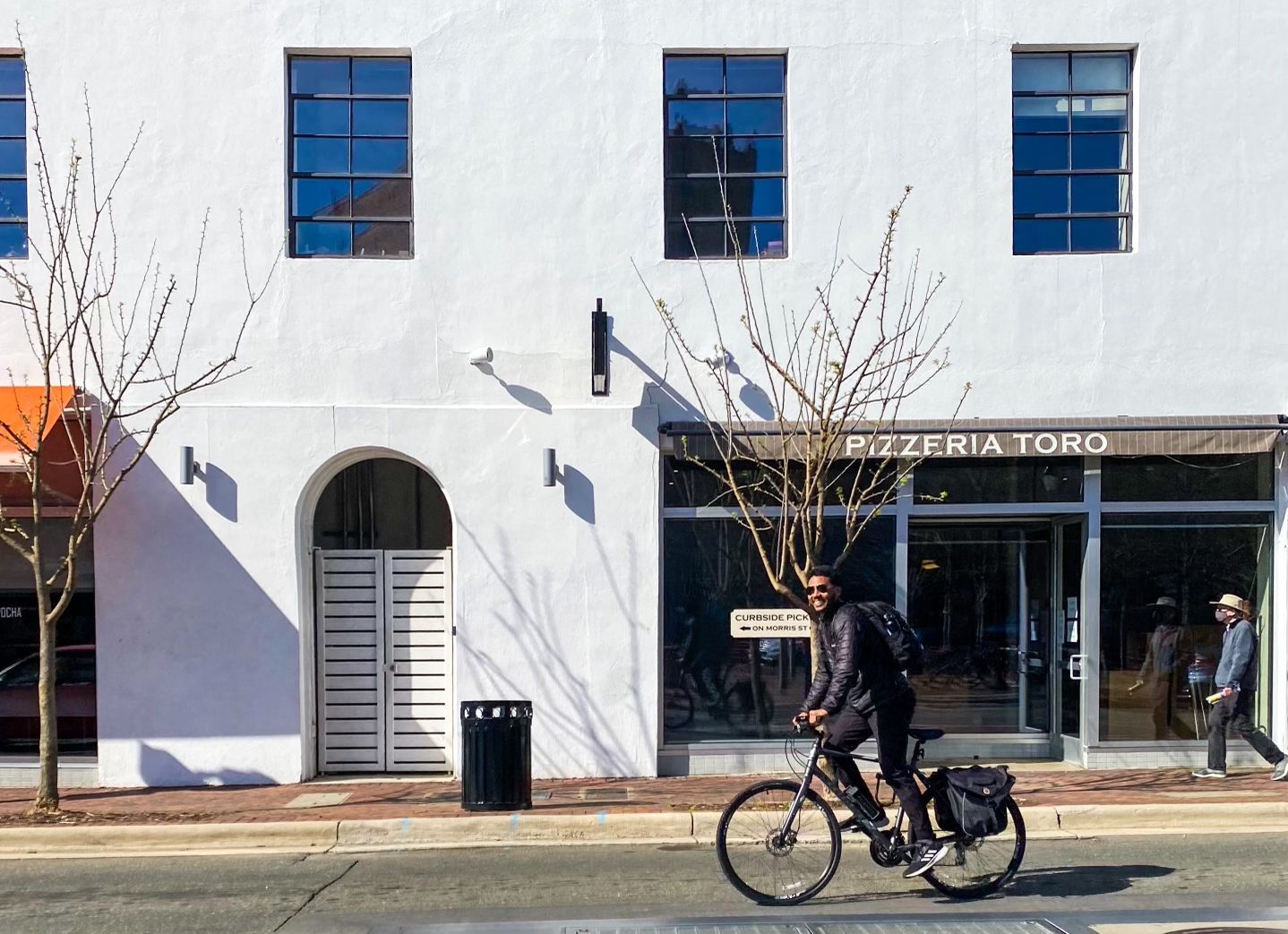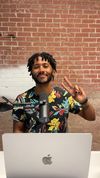The Trauma of Urban Cycling
What will it take to convince you that I'm worth it?

My friend Miranda snapped this photo of me last week. She posted it with the caption “nature is healing.” She’s not wrong. Riding through town and seeing people out in the streets is jarring yet relieving. It’s a beautiful sight, one that gives me hope for the future. That is, if I live long enough to see our future. If the motorists had their way, they’d wipe me off the street like a bug on a windshield.
I don’t know if it’s that people just haven’t driven in a while, or forgot that other humans exist because they’ve been stuck at home, but I’ve noticed a significant increase in micro aggression and straight up foul play while biking around. It’s troubling. Biking used to be relaxing. Now, I realize it’s just a test of my patience and reflexes. I ride like a panicked teenager in a slasher film, constantly looking over my shoulder to see what blood-thirsty psychopath is following behind me with murderous intent.
Growing up, we’re all force fed the American Dream: a house, a car, couple kids, suit and tie job. Without reaching those benchmarks, you’re a failure. This narrow view of success has historically punished anyone who doesn’t fit the White, male, heteronormative system we’ve been crammed into. There’s good reason to dissect each one of those troupes (later blog post?), but I want to narrow in on car ownership.
I didn’t get my license until I was 19. There is both privilege and unfortunate circumstance baked into that. When I was in high school, I relied heavily on other people (friends, parents, partners) to get around. After I enrolled at Durham Tech two years after graduation, and started hanging out at UNC-Chapel Hill on the weekends, I got proficient at riding the bus: the 1/3 to and from my grandparents house where I lived, the 8 to school, the 11 to work, the 5 to see my girlfriend, and the once-free Robertson Scholarship Bus from Duke West Campus to the planetarium on campus at UNC for redacted.
I’ve owned one car in my life: a 1995 Jeep Grand Cherokee that I bought for $1000 back in 2014. It didn’t last long. After it kicked, I bought a bike and never looked back. Again, that decision falls somewhere on the spectrum of privilege and disadvantage. I still rely on the charity of other people in my life to do things my bike won’t allow, but for the most part, I’ve been a bike commuter for seven years and counting.
It’s an honest life.
The advent of motor vehicles solved a number of issues when they first took over our roads. Since then, we’ve groveled at the tires of Big Combustion Engine, paving over our environment and our communities, while neglecting pedestrians and cyclists in the process.
With more people committing to work-from-home lifestyles, our transit system should be re-engineered for the oncoming decrease in cars on the road. Instead, we need to build an equitable transit system that prioritizes the health of our communities, and the planet, by investing in infrastructure that emphasizes pedestrian safety with more sidewalks and tree canopies, increases the number of bike lanes, bus systems and railways, and re-centers our local communities.
During the pandemic, we experienced what life would be like with less cars on the road: wide open streets, less noise pollution, less actual pollution, more space for outdoor dining, and the list goes on. Many of us don’t want to “return to normal” because normal didn’t accommodate our existence in the urban landscape. Pedestrians and cyclists are treated like second-class citizens. It’s time to think differently.
My frustration isn’t with motorists. It’s what motorists represent: an attitude of selfishness, egotism, and a disconnection from the community. When you’re insulated by a giant metal box, it’s easy to be reckless around others more vulnerable than you. But if “nature is healing” then don’t leave pedestrians, cyclists, or our planet, scarred for life.

